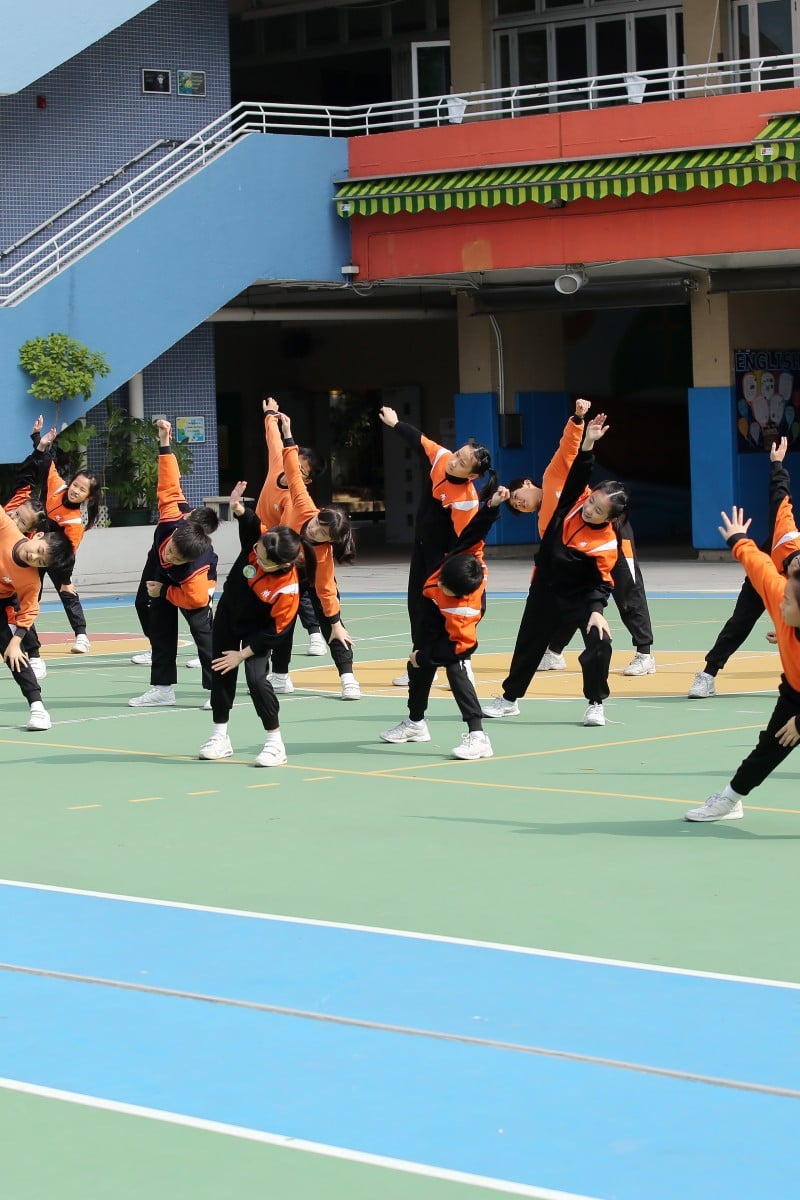Physical education is necessary for every student because it promotes overall physical well-being and helps develop important life skills. Engaging in regular physical activity improves cardiovascular health, builds muscle strength, and enhances coordination.
Additionally, physical education fosters teamwork, communication, and problem-solving abilities, preparing students for future challenges. With technology increasingly dominating lifestyles, it is crucial to prioritize physical education to combat sedentary habits and promote active and healthier lifestyles. Through structured physical education classes, students receive guidance on proper exercise techniques, learn the importance of fitness, and develop a positive attitude towards physical activity.
By integrating physical education into the curriculum, schools can empower students to lead healthy lives and instill lifelong habits of regular exercise.
Benefits Of Physical Education
Physical education is an essential component of every student’s education as it provides numerous benefits. Firstly, it contributes to enhancing physical health and fitness by promoting regular physical activity, leading to a stronger immune system, improved cardiovascular health, and reduced risk of chronic diseases. Secondly, it plays a significant role in developing motor skills and coordination. Through activities such as running, jumping, and throwing, students can improve their balance, agility, and overall body control. Thirdly, physical education has a positive impact on mental well-being. Regular exercise helps reduce stress, anxiety, and depression, enhancing mood and promoting better cognitive function. Lastly, physical education promotes social interaction and teamwork. Through group activities and games, students learn to communicate, cooperate, and work together, fostering important social skills and building stronger relationships. In conclusion, physical education is crucial for the overall well-being of students, providing benefits for their physical, mental, and social development.
Academic Performance And Physical Education
Physical education plays a crucial role in the academic performance of students. Research has shown a strong correlation between physical activity and academic achievement. Engaging in regular physical exercise has been found to enhance cognitive skills such as attention, memory, and problem-solving. Physical education classes provide an opportunity for students to participate in various physical activities, promoting overall learning outcomes.
Physical Education And Healthy Lifestyle
Physical Education plays a crucial role in promoting a healthy lifestyle for every student. It goes beyond traditional classroom learning and encourages lifelong physical activity habits. By integrating physical education into the curriculum, schools help students develop a strong foundation of fitness and exercise that can benefit them throughout their lives.
One major aspect of physical education is educating students about proper nutrition and healthy choices. Students learn about the importance of consuming a balanced diet and making informed nutritional decisions. This knowledge empowers them to make healthier choices and establish good eating habits that can prevent various health problems.
Preventing and managing chronic diseases is another key benefit of physical education. Regular physical activity reduces the risk of chronic conditions such as obesity, diabetes, and cardiovascular diseases. By engaging in physical education classes, students are equipped with the tools and knowledge to prevent these diseases and manage them effectively if they occur.
Overcoming Barriers In Physical Education
Physical education is crucial for the overall development of every student, as it provides numerous benefits in terms of physical health, mental well-being, and emotional growth. Overcoming barriers in physical education is essential to ensure that all students have access to these benefits.
Paragraph 2One of the common challenges faced in physical education is limited resources and facilities. Schools with limited budgets may struggle to provide adequate equipment and space for physical activities. To address this barrier, schools can seek partnerships with local organizations and businesses to secure additional resources. They can also implement creative solutions, such as incorporating outdoor activities or utilizing multipurpose spaces for physical education classes.
Paragraph 3Promoting inclusivity and accommodating diverse needs is another vital aspect of overcoming barriers in physical education. Schools should strive to create an environment where every student feels welcome and supported. This can be achieved through the adoption of adaptive physical education programs that cater to students with disabilities or special needs. Additionally, teachers can implement differentiated instruction techniques and modify activities to ensure that all students can actively participate and benefit from physical education.
Paragraph 4Time constraints and other challenges can also hinder the effectiveness of physical education. Schools can allocate specific time slots for physical education classes, ensuring that they are given equal importance alongside academic subjects. Teachers can also focus on incorporating physical activity breaks throughout the day to extend the benefits of physical education beyond designated class periods.
Physical Education And Discipline
Physical Education and Discipline:
Physical education plays a crucial role in promoting self-discipline and responsibility in students. Through structured physical activities, students learn to follow rules, directions, and routines, instilling a sense of discipline. Regular participation in physical education classes teaches them the importance of being punctual, taking turns, and respecting others’ space. These experiences help students develop a sense of responsibility towards themselves and others.
Enhancing focus and concentration:
Engaging in physical activities helps students enhance their focus and concentration levels. When students participate in activities like sports, dance, or team games, they learn to concentrate their attention on the task at hand. The physical exertion involved in these activities releases endorphins, which improve mood, attention, and cognitive function. As a result, students develop better concentration skills, which can positively impact their academic performance.
Teaching important life skills:
Physical education not only benefits students in terms of physical fitness but also teaches them essential life skills. Through teamwork and cooperation in sports and group activities, students learn important skills like communication, problem-solving, leadership, and goal setting. Physical education also promotes the development of positive social interactions, resilience, and perseverance. These skills are transferable to various aspects of life and contribute to the holistic development of students.
Physical Education For Cognitive And Emotional Development
Physical Education (PE) plays a crucial role in the cognitive and emotional development of students. Engaging in physical activity has been shown to have positive effects on brain function and cognitive abilities. Regular exercise stimulates the brain, improving memory, attention, and learning. It promotes the production of neurotransmitters that enhance mood and reduce stress and anxiety. By incorporating PE into the curriculum, students have the opportunity to release pent-up energy and frustration, leading to improved mental well-being. Physical activity also helps in fostering self-esteem and confidence. It provides a platform for students to challenge themselves physically, achieve personal goals, and experience a sense of accomplishment. Additionally, PE encourages teamwork and cooperation, further developing social skills. Overall, physical education is essential for every student as it not only promotes physical fitness but also contributes significantly to their cognitive and emotional growth.
Integrating Technology In Physical Education
Physical education plays a crucial role in the overall development of students as it not only promotes their physical health but also enhances their cognitive and social skills. Integrating technology in physical education has become increasingly important in today’s digital age.
Utilizing fitness apps and wearable devices can provide students with real-time data and feedback on their physical activity. This not only motivates them to stay active but also helps them set and achieve their fitness goals. Additionally, incorporating gamification in physical education can greatly increase student engagement. By turning physical activity into a game-like experience, students are more likely to participate and enjoy the learning process. Moreover, blending traditional and virtual physical education activities allows students to experience a variety of exercises and sports, both in the real world and through virtual simulations.
By embracing technology and incorporating it into physical education, educators can create an interactive and engaging learning environment that promotes both physical and mental well-being.

Credit: www.scmp.com
Building A Comprehensive Physical Education Curriculum
Building a comprehensive physical education curriculum is essential for every student’s development. It involves incorporating a variety of physical activities and sports to ensure holistic growth. By offering a diverse range of exercises, such as team sports, individual sports, and recreational activities, students have the opportunity to explore different interests and discover their passions.
This curriculum aims to strike a balance between competitive and cooperative exercises. While competitive sports cultivate a sense of discipline, leadership, and healthy competition, cooperative activities promote teamwork, cooperation, and inclusivity. By engaging in both types of activities, students develop various skills, improve their physical fitness, and learn valuable life lessons.
Addressing safety and injury prevention measures is of utmost importance in any physical education program. Educators must provide proper guidance on warm-up exercises, protective gear usage, and techniques to avoid accidents. This ensures a safe environment for students to participate in physical activities and minimizes the risk of injuries.
Support For Physical Education In Schools
Physical education is crucial for the holistic development of every student, and there is a need for strong support and advocacy for its inclusion in schools. Collaborating with parents, teachers, and community members is essential to create an environment that values and prioritizes physical education. By involving parents, we can generate awareness about the benefits and encourage them to support physical education programs. Teachers play a crucial role in implementing structured physical education lessons, incorporating movement breaks, and promoting an active lifestyle. Community members, such as local sports clubs and organizations, can contribute by providing resources and expertise to enhance physical education programs.
Advocacy efforts should also focus on allocating adequate resources and funding for quality physical education programs. Adequate space, equipment, and qualified instructors are essential to deliver effective and engaging physical education classes. By advocating for increased resources and funding, we can ensure that schools can provide a comprehensive physical education curriculum, which includes a wide range of activities and promotes lifelong physical fitness habits. Supporting physical education in schools not only enhances students’ physical health but also contributes to their cognitive, emotional, and social development.
Conclusion
Incorporating physical education into the curriculum is vital for every student’s overall development and well-being. It not only promotes physical fitness but also enhances cognitive skills, fosters social interaction, and improves mental health. By providing opportunities for physical activity, schools can create a positive and healthy environment for students.
Emphasizing the importance of physical education equips students with essential life skills and sets them up for success in all aspects of their lives.






